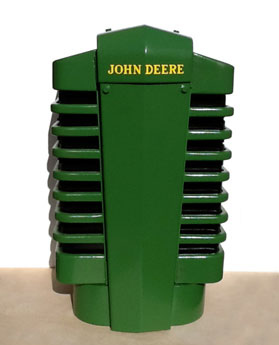
Here's My Woodworking!
by Joe Rolwing
Nashville, TN
Click on any picture to see a larger version.
I am semi-retired after a career of working in the business end of healthcare, but with a woodworking hobby that started when I was growing up on a farm in Southeast Missouri. I've always been more interested in one-off projects rather than risking ruining a good hobby and trying to sell your product. I've also tended to get more satisfaction working without plans on projects some would consider more on the unusual side.
Looking around my living room, I see a pie safe hiding my stereo equipment, a coopered barber pole, and a 24" circular clock fashioned from scrap left from a bed/wall divider I made for my daughter. In the dining room there are two hobby horses, one of pine salvaged from a warehouse on a fixed base, the second of cherry on rockers. My sister-in-law imported antiques from England for several years, and allowed me to borrow several that I was able to copy. These include the pine hobby horse, a ship model, and a small cabin with completed interior. Stored upstairs are a doll house modeled after our first home in Knoxville and a bench made also made from salvaged pine beams.
Many years ago I purchased about 50 board feet of virgin wormy chestnut, paying more than my skill level probably justified. After storing it for 25 years to salvage my conscience and moving it from Knoxville to Nashville, I built a mountain dulcimer, carving the top and bottom similar to a violin. My intended purpose in this additional work was the assumption that it would give me the extra incentive to learn to play it. It didn’t work.
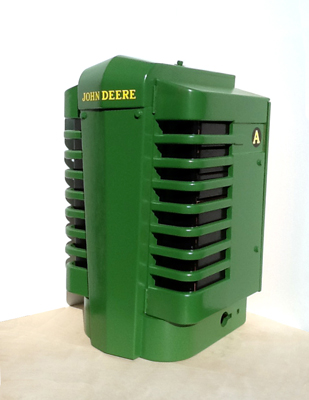
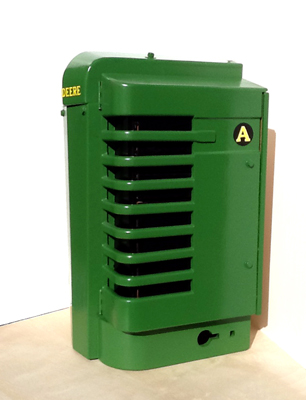
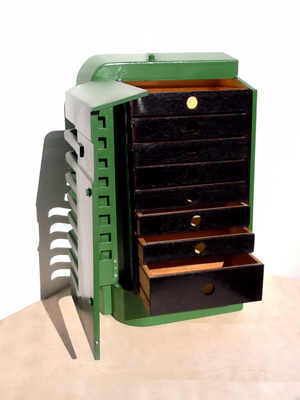
The project pictured here has been formulating in the back of my mind for about 15 years. I learned how to drive on a 1950’s John Deere tractor while working on my Dad’s farm. Typically this history would have transitioned to owning a real antique tractor, but living in an urban subdivision with limited space didn't support that type of hobby. I started taking pictures at antique tractor shows, then decided on a scale (approx 65%) and laid out the rough dimension. I didn't take the time to draw out a professional set of plans, but launched directly into fitting each piece individually from both solid hardwood and various thicknesses of plywood. The grill parts are glued up from three pieces of hardwood. I tried using ash and steam bending but my skill level just wasn't there for this tight a bend. The ash having been kiln dried might have also have been part of the problem.
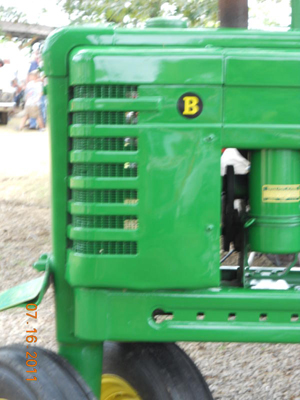
This is a Model B John Deere, slightly smaller than a Model A and with six grill veins rather than seven used in an A.
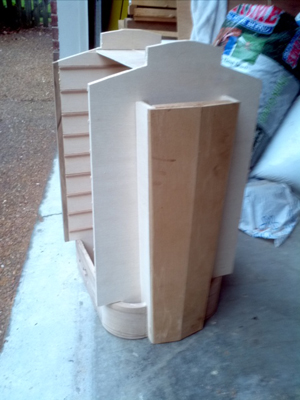
The project is all plywood with the exception of the base. My first thought was to make the inside to hold wine bottles, but moved on to 8 small drawers on both sides to hold my carving tools. I hinged the side doors on the front to ensure room to be able fully open them allowing removal of the drawers. I intentionally made the radius of the grill smaller than actual to maximize drawer space. I've now completed a second; hinging the doors at the back and increasing the grill curve, creating a more realistic appearing model.
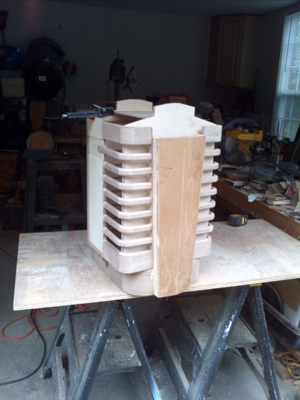
Here it is with the doors installed.
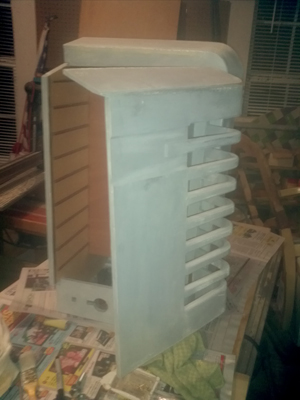
I have a lot of time invested between the last picture and this one. That transition curve at the top front is the most difficult part of the cabinet, gluing multiple parts to fabricate these compound curves. The door is partially open, making it a little difficult to see.
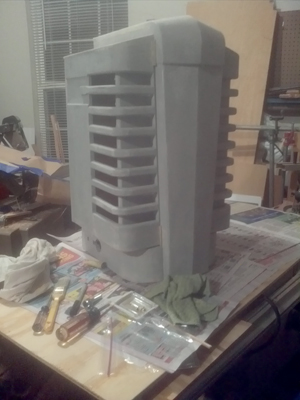
Here is the completed primed cabinet.
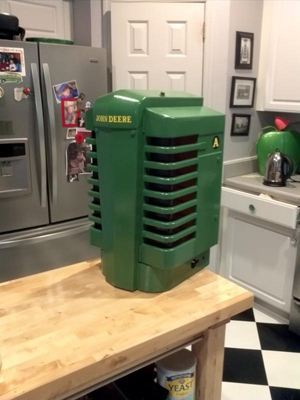
And here is the finished product. I used sandable primer and "Classic John Deere" green from my local John Deere dealer. The 7 inch wide "John Deere" decal is available from Classic Ag/The Decal Store in Ainsworth, NE. The "A" is 1.75' diameter and custom made by Callie Graphics in Placitas, NM:
www.callie-graphics.com
.
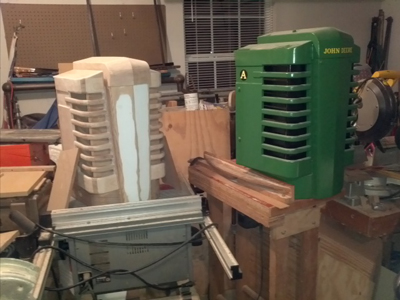
The above picture shows my first completed and the second during construction. As evidenced by the background, my shop is in my garage. We’ve lived in our home for fifteen years, and our garage magnetically attracts my wife's currently out of style artifacts but still categorized as keepsakes, so my working space has been gradually reduced over time. This has resulted in my having to move my equipment into the doorway area, but this has also minimized my dust problem.
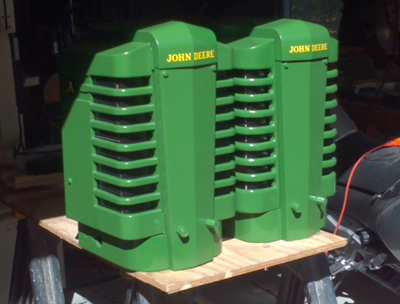
Here are the completed first and second editions, and in my mind the second is better looking with the larger radius grill curve, but the drawers are smaller.
You can email Joe at
joerolwing@bellsouth.net
.
Would you like to see your woodworking in this column? We invite you to
SEND US PHOTOS
of your favorite woodworking projects along with captions and a brief history of your woodworking.
(Email photos at 800x600 resolution.) Receive a $50 store gift card if we show your stuff in a future issue.
Return to
Wood News
front page

